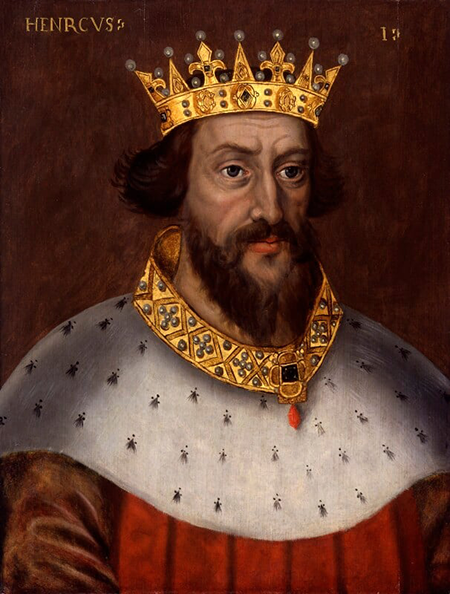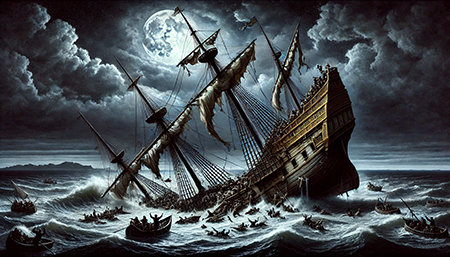



King Henry I – Quick Stats




Born: c. September 1068 AD
Ascension to the Throne
The path to the throne was far from straightforward for Henry. Following the death of William the Conqueror in 1087, England was inherited by his second son, William II (also known as William Rufus), while Normandy went to his eldest son, Robert Curthose. Henry was left with a monetary inheritance, effectively sidelining him from direct power
The path to the throne was far from straightforward for Henry. Following the death of William the Conqueror in 1087, England was inherited by his second son, William II (also known as William Rufus), while Normandy went to his eldest son, Robert Curthose. Henry was left with a monetary inheritance, effectively sidelining him from direct power
Marriages and Succession
Henry married Matilda of Scotland in 1100, a union that strengthened his ties to the Anglo-Saxon lineage and helped legitimize his rule. Matilda was the daughter of King Malcolm III of Scotland and a descendant of the ancient Wessex kings, creating a symbolic link between the Norman and Anglo-Saxon dynasties. Together, they had two children, William Adelin and Matilda. This marriage not only secured Henry’s position domestically but also fostered diplomatic relations with neighboring kingdoms, enhancing England’s influence on the international stage.
Henry married Matilda of Scotland in 1100, a union that strengthened his ties to the Anglo-Saxon lineage and helped legitimize his rule. Matilda was the daughter of King Malcolm III of Scotland and a descendant of the ancient Wessex kings, creating a symbolic link between the Norman and Anglo-Saxon dynasties. Together, they had two children, William Adelin and Matilda. This marriage not only secured Henry’s position domestically but also fostered diplomatic relations with neighboring kingdoms, enhancing England’s influence on the international stage.
King Henry I of England: The Scholar-King
Early Life and Education
Henry was born in Selby, Yorkshire, in 1068, as the youngest son of William the Conqueror and Queen Matilda of Flanders. Unlike his elder brothers, who were groomed primarily as warriors, Henry received an extensive education, earning him the nickname "Beauclerc" (meaning "Good Scholar"). His education included Latin, philosophy, theology, and the workings of governance—an unusual focus for a Norman nobleman of his time. This grounding in administrative and legal matters would later become one of the hallmarks of his reign, influencing his approach to leadership and governance.
Henry was born in Selby, Yorkshire, in 1068, as the youngest son of William the Conqueror and Queen Matilda of Flanders. Unlike his elder brothers, who were groomed primarily as warriors, Henry received an extensive education, earning him the nickname "Beauclerc" (meaning "Good Scholar"). His education included Latin, philosophy, theology, and the workings of governance—an unusual focus for a Norman nobleman of his time. This grounding in administrative and legal matters would later become one of the hallmarks of his reign, influencing his approach to leadership and governance.
Henry's coronation marked the beginning of a reign characterized by both stability and reform. He sought to distinguish himself from his predecessor by addressing grievances and restoring trust in the monarchy. His efforts to present himself as a just and reform-minded ruler earned him the loyalty of his subjects and the Church, solidifying his authority during the early years of his reign.
Henry’s reign is notable for significant administrative innovations that laid the groundwork for a more centralized and efficient governance system. He expanded the use of the royal exchequer, a financial institution that allowed for more effective management of royal revenues. The Pipe Rolls, detailed financial records, also date from Henry’s reign, providing an unprecedented glimpse into medieval administration. These reforms solidified the authority of the crown and reduced the autonomy of feudal lords, making England one of the most administratively advanced kingdoms of its time. Henry’s commitment to efficient governance reflected his belief in the importance of order and stability as cornerstones of a successful monarchy.
Conflict with Robert Curthose
Henry’s claim to the throne was not uncontested. His elder brother, Robert Curthose, Duke of Normandy, believed himself to be the rightful king. This rivalry culminated in the Battle of Tinchebray in 1106, where Henry’s forces decisively defeated Robert’s army. Henry captured Robert and imprisoned him for the rest of his life, effectively uniting England and Normandy under a single ruler. This victory not only secured Henry’s position but also marked the peak of Anglo-Norman power. By consolidating these territories, Henry strengthened his kingdom’s position within Europe, fostering a sense of unity and stability that would endure throughout his reign.
Henry’s claim to the throne was not uncontested. His elder brother, Robert Curthose, Duke of Normandy, believed himself to be the rightful king. This rivalry culminated in the Battle of Tinchebray in 1106, where Henry’s forces decisively defeated Robert’s army. Henry captured Robert and imprisoned him for the rest of his life, effectively uniting England and Normandy under a single ruler. This victory not only secured Henry’s position but also marked the peak of Anglo-Norman power. By consolidating these territories, Henry strengthened his kingdom’s position within Europe, fostering a sense of unity and stability that would endure throughout his reign.
The Battle of Tinchebray was a turning point that underscored Henry’s military prowess and strategic insight. His ability to outmaneuver his brother both on the battlefield and in diplomatic negotiations demonstrated his aptitude for leadership and his unwavering determination to protect his realm from internal and external threats. The unification of England and Normandy under Henry’s rule marked a period of prosperity and growth, as the king worked to integrate these regions into a cohesive political and administrative entity.
King Henry I of England, often called "Henry Beauclerc" for his scholarly nature, was one of the most influential monarchs of the Norman dynasty. Reigning from 1100 to 1135, he was the fourth son of William the Conqueror and was never expected to ascend the throne
Died: c. 1st December 1135 AD
Mother: Matilda of Flanders
Father: William The Conqueror
Wife: Matilda of Scotland 1100 - 1118 AD
Children: William Adelin
Matilda
Over 20 acknowledged illegitimate Children
The Charter of Liberties and Administrative Reforms
One of Henry’s first acts as king was the issuance of the Charter of Liberties, a precursor to the Magna Carta. This document sought to curtail the excesses of royal power and restore the laws of Edward the Confessor, promising reforms in taxation, justice, and the treatment of the Church. The charter reflected Henry’s desire to present himself as a fair and accountable ruler, in stark contrast to his brother William Rufus, whose reign had been marked by despotism and discord.
One of Henry’s first acts as king was the issuance of the Charter of Liberties, a precursor to the Magna Carta. This document sought to curtail the excesses of royal power and restore the laws of Edward the Confessor, promising reforms in taxation, justice, and the treatment of the Church. The charter reflected Henry’s desire to present himself as a fair and accountable ruler, in stark contrast to his brother William Rufus, whose reign had been marked by despotism and discord.
Tragedy struck in 1120 with the sinking of the White Ship, a disaster that claimed the life of William Adelin, Henry’s only legitimate son. The loss threw the succession into crisis and marked one of the most significant turning points of Henry’s reign. To secure his legacy, Henry named his daughter Matilda as his heir, forcing the barons to swear allegiance to her. However, this decision would lead to a prolonged period of civil war known as The Anarchy after Henry’s death.
Legal and Cultural Contributions
Henry’s reign saw advancements in legal and cultural spheres. He strengthened the royal court system, making it a key instrument for justice and governance. The establishment of itinerant justices helped extend royal authority into the countryside, ensuring that the king’s law reached even the most remote areas. These reforms not only enhanced the efficiency of the legal system but also reinforced the king’s role as the ultimate arbiter of justice.
Henry’s reign saw advancements in legal and cultural spheres. He strengthened the royal court system, making it a key instrument for justice and governance. The establishment of itinerant justices helped extend royal authority into the countryside, ensuring that the king’s law reached even the most remote areas. These reforms not only enhanced the efficiency of the legal system but also reinforced the king’s role as the ultimate arbiter of justice.
Culturally, Henry’s court was a center of learning and intellectual exchange. His patronage of scholars and clerics helped revive classical studies and promoted the writing of histories and chronicles. The Anglo-Saxon Chronicle, an invaluable historical record, continued under his reign, blending Norman and English traditions into a unified narrative. Henry’s support for education and the arts reflected his belief in the transformative power of knowledge and culture as tools for governance and societal advancement.
Death and Legacy
King Henry I died on December 1, 1135, in Normandy, allegedly after eating a surfeit of lampreys, a delicacy he refused to abstain from despite medical advice. His death left England on the brink of chaos, as the barons largely ignored their oaths to support Matilda, paving the way for a bloody civil war. The Anarchy, which ensued following Henry’s death, underscored the fragility of the succession and the challenges inherent in maintaining stability during a time of dynastic uncertainty.
King Henry I died on December 1, 1135, in Normandy, allegedly after eating a surfeit of lampreys, a delicacy he refused to abstain from despite medical advice. His death left England on the brink of chaos, as the barons largely ignored their oaths to support Matilda, paving the way for a bloody civil war. The Anarchy, which ensued following Henry’s death, underscored the fragility of the succession and the challenges inherent in maintaining stability during a time of dynastic uncertainty.
Despite the turmoil that followed his death, Henry I’s reign is remembered for its lasting impact on the English monarchy. His administrative reforms, commitment to justice, and efforts to centralize royal authority laid the foundation for the development of a more unified and organized English state. As a scholar-king, he blended intellect with pragmatism, leaving a legacy that shaped the trajectory of English governance for generations. His contributions to law, culture, and administration continue to be celebrated as defining elements of his rule, underscoring the enduring significance of his reign in the broader context of English history.
Henry’s ability to navigate the complexities of leadership, foster stability, and implement meaningful reforms cemented his reputation as one of the most effective monarchs of the medieval period. His legacy endures as a testament to the transformative power of intellect, vision, and determination in the face of adversity.
However, his intelligence, pragmatism, and political acumen enabled him to secure the crown after the unexpected death of his elder brother, King William II, and maintain one of the most stable and impactful reigns in medieval English history. Henry's rule was marked by significant administrative innovations, military triumphs, and an enduring legacy that shaped the English monarchy for generations to come.
Henry's childhood was shaped by the complexities of his family's political ambitions. As the youngest son, he was not initially destined for power, but he displayed a keen intellect and a talent for navigating the intricate dynamics of the Norman court. His ability to observe and learn from the successes and failures of his father and brothers equipped him with the skills necessary to seize opportunities when they arose, setting the stage for his eventual rise to power.

Successor : Stephen of Blois
Predecessor : King William II
However, the dynamics shifted dramatically in 1100 when William II died in a suspicious hunting accident in the New Forest. Seizing the opportunity, Henry quickly acted, claiming the throne at Westminster Abbey and issuing the Charter of Liberties to secure the support of the barons and clergy. His swift and decisive actions demonstrated his political acumen and his ability to capitalize on unexpected events to consolidate his position.

Henry’s determination to ensure a smooth succession despite the challenges he faced highlights his commitment to preserving the stability and continuity of his dynasty. His efforts to secure Matilda’s position as heir reflected his forward-thinking approach to governance, even as it foreshadowed the tumultuous events that would follow his passing.
Depiction of the White Ship Disaster


